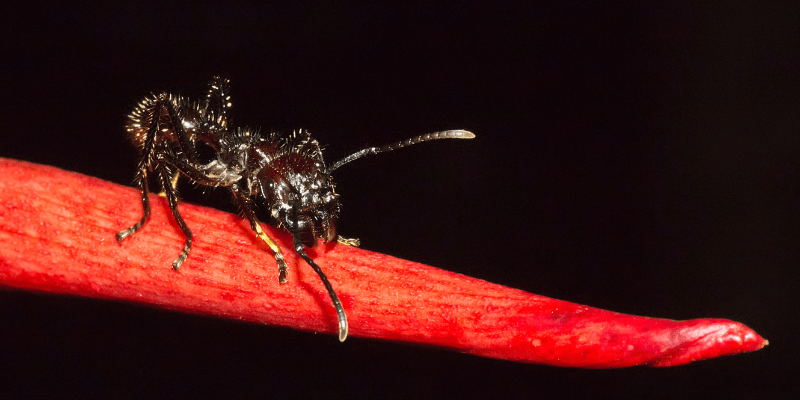1. Record-Breaking Sting
The Schmidt Pain index is a measure of how painful insect stings are and includes some of the most formidable insects in the world, from honey bees to tarantula hawk wasps. The king of them all, however, is the bullet ant, which ranks as having the most painful sting in the animal kingdom. The bullet ant stings with a venom that is toxic to both arthropods and vertebrates alike, producing pain that is often likened to being shot.
Some tribes that share territory with the bullet ant use the powerful venom as rite of initiation, creating intricately woven gloves filled with angry bullet ants. Young men, to become warriors, must don the gloves many times and be stung repeatedly. The pain is excruciating and the rite can be dangerous, placing large amounts of stress on the body. It can take more than a whole day for the intense pain to cease, which is why stings from this species are not to be taken lightly.

2. Natural-Born Warriors
Bullet ants are a menace to all species of invertebrates, other ants included. Colonies of bullet ants are extremely territorial and will go to war with any ant colony that gets too close, often completely eradicating competing colonies. They are excellent fighters and their venom specifically targets other insects, meaning that there are few species of ants that can win in a fight against a bullet ant colony.
The bullet ant is not invincible, however, and a leading cause of bullet ant death is a species of fly that is a bullet ant parasite. It can only attack through wounds, however, which bullet ants are prone to due to their warlike nature.
3. Massive size
Bullet ants are not simply the carriers of incredible venom. They are also huge, often attaining sizes of 1.2 inches, with massive mandibles capable of delivering a nasty bite and a large stinger capable of injecting large amounts of venom. This size allows them to take on fairly large invertebrate prey as well as allowing them to better fight rival ant colonies, including other bullet ants. It also makes them far more intimidating to birds and insect predators, which otherwise might try to make a meal out of them.
4. Climbing Ability
The bullet ant is a large species but it does not let this large size stop it from spending most of its life in the trees. The bullet ant tends to nest in the ground but the workers will spend most of the day up in the tree, hunting for small invertebrates. They are such powerful predators that some species of butterflies have evolved special toxins to fend off attacks from the bullet ant.
5. Warning Sounds
Bullet ants, despite their incredibly powerful venom, are not terribly aggressive towards larger animals and prefer to warn other animals of their presence. When they feel threatened they rub their carapaces and produce a warning sound that serves as a warning for any nearby animals to stay away. This is beneficial for the bullet ant and the animals that hear it, as the ants can remain undisturbed and the animals can avoid the incredibly painful bullet ant sting.
